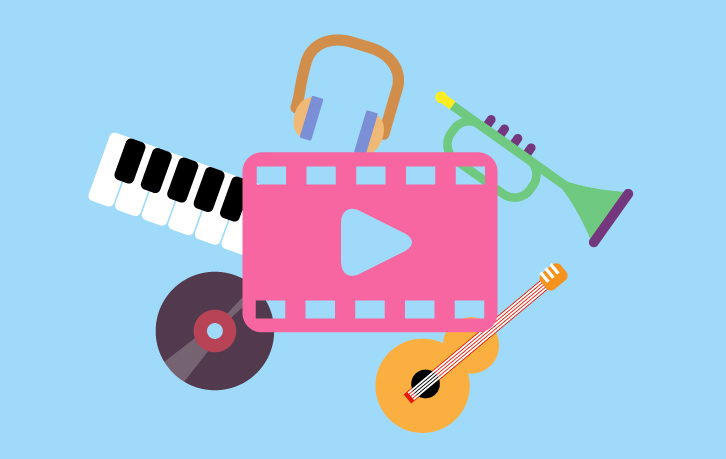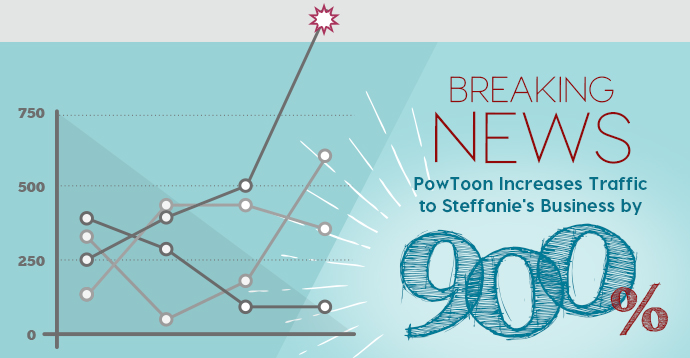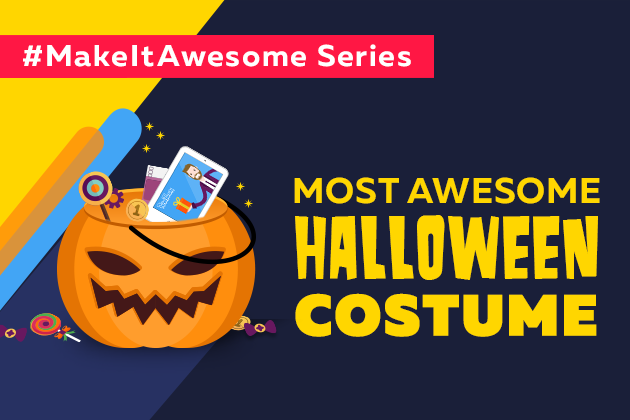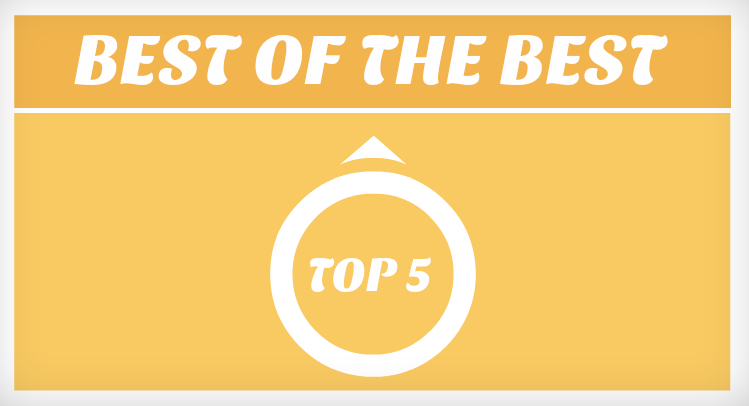
The Secret to Selecting the Perfect Soundtrack for Your Video, Every Time
This is a post by Guest Contributors Ron Passaro and Shawn P. Russel from Audio Verite.
Ok, so you’re making a video. Or, if you already have, great! But, now you want to add music. This is, of course, a smart idea. The advertising industry spends billions of dollars a year on music to help sell their products, as well as all the other audio/visual mediums – so you are in good company! But how do you decide what kind of music to use? This can be an overwhelming and intimidating task.
We are composers, and we deal with this issue professionally all the time. Matching music to picture is a bit of a black art, but we are going to help break down how to go about choosing the right music for your project.
Music for video is approached in really only a handful of ways:
- Popular Music – Costs can easily run into the millions, but to the companies that can afford it, it is worth it to them to license songs by folks like Beyonce, U2 and The Rolling Stones. Even lesser known bands can be quite expensive.
- Stock/Library Music – This is ready-to-use, prefabricated music. Prices vary wildly depending on where you get it. A startling range of styles and genres are available, but know that the quality varies just as much.
- Custom Music – The creators hire composers to write music specifically for the video. This approach is hard to beat, and can be invaluable when dealing with mood or pace changes where stock music just won’t cut it. For example, you’ll often hear custom music in animated commercials that require the music to be scored to picture – to “trap” certain actions shown on screen. Think Hershey’s Kisses and Walt Disney World commercials. But that’s not the only reason to use custom music. Many advertising agencies and video creators prefer having their videos scored by a composer because that way their vision can be realized 100%, rather than settling for something that gets you 90% of the way there like with stock music. Another service that hired talent can provide is brand identity, or logo music. Think about the NBC three note logo, or McDonald’s “I’m Lovin’ It” campaign.
- Jingles – These are those short little vocal tunes promoting the product or brand. They are basically a subset of the above “Custom Music” category, but are important enough that they deserve their own bullet point here.
These approaches differ widely in terms of resources but deal with many of the same issues on one level or another. So what are those issues?
Deciding on the “Right” Music
Now comes the hard part. What music is right for your project? Let’s break down the most important aspects of music as they relate to video. We should mention that these elements all interact with each other, so it is important to think about them together, rather than taking a more linear checklist approach. That being said, tempo is always a great starting point. In film scoring 101 you learn to come up with tempo before everything else because if you get that right you’re increasing your odds that everything else will fall into place.
- Tempo - What is the speed or pacing of the video? Is it laid back? Are you trying to get the viewer pumped up? If you’re promoting a massage special at a spa, chances are you want a slower, more relaxed tempo. But if you are trying to get people down to the monster truck rally, you want a faster tempo to get people excited for the event.
- Genre/Instruments - Your target demographic figures heavily into your options here. For example, if you are advertising a retirement plan from an investment firm, dance music is not the right choice. You are appealing to older, successful professionals, so you would likely opt for something more sophisticated. A classical piece with strings and piano may be just the ticket. Returning to the spa example, when you think of relaxing music, you think of harp, flutes, or maybe some solo sitar. So some slower classical music featuring harp, some new age flute, or Indian-flavored music featuring sitar will be just the thing. With the monster truck rally, some hard rock or heavy metal would work perfectly. Pounding drums and big guitars chugging along at a brisk tempo will get folks excited for the show.
- Mood/Vibe - This ties in closely with the Genre/Instrument category, but it can sometimes be useful to consider on its own. For example, if your video is asking for donations to help abused animals, you might want something that makes the viewer empathize with the animals more, so something sad and emotional can accomplish that.
- Density/Activity Level - How busy do you need your music to be? Is there a voice over? You need to be careful not to have too much going on in the music that will distract or interfere with your dialogue. A good rule of thumb is if your video features primarily images, the music needs to take the lead. However, if your video contains a lot of dialogue/information, the music needs to be less active and play a supporting role instead, drawing the viewer closer to the message you are communicating to them. A prominent melody or instrument that is very active rhythmically can distract and interfere with the voice over, and be damaging to your presentation.
- Vocals or Instrumental? - Should you use music that includes singing and lyrics? Returning to the point above, if your video features lots of voice over, then singing under that will probably clash. But if there is sparse dialogue or light use of voice over, a song could be just the ticket. A nice voice with some relevant lyrics can really help with brand recognition and recall. It is also worth noting that songs with vocals are generally supplied with and without vocals so the creator can chop it up and bring in the vocals when they want to, which can be a really effective compromise.
- Take It to the Next Level – Have a piece written specifically for your spot, like the popular “I am man” Burger King commercials. In these commercials, the people onscreen actually appear to be singing in the style of a musical to the classic Oscar Mayer Weiner song. A hybrid of this is changing the words of an existing song to be relevant to your company or brand (“Viva Viagra!” or the series of “Mohegan Sun” commercials that utilized rewritten lyrics to songs like “Super Freak”). In that case, however, you’re back to paying a significant amount of money to the rights holders of the original song(s) if they’re not yet in the public domain.And then, of course, you can feature a jingle at the beginning and/or end of your ad. This technique is making a bit of a comeback lately, with companies like Farmers Insurance (“We are farmers, bum ba bum ba bum bum bum”), GoDaddy (“Go Daddy! Go Go Daddy!”) and the previously mentioned McDonald’s “I’m Lovin’ It” ads.
Putting It All Together
Ok, so now that we’ve focused on the details, it is time to take a step back and look at the big picture. There have been numerous scientific studies about the psychology of music, the influence of music in advertising and music’s ability to affect purchasing decisions. Unfortunately, and perhaps predictably, not much agreement has been reached. The way that music, commercials, products and people interact is a complex and multi-faceted issue. The overall consensus of these studies is essentially that choosing the right music for your presentation is extremely beneficial.
So that brings us to our next point. You can’t separate the music from the rest of the presentation – all of the pieces interact and affect each other. How are your video cuts paced? Is the voice over tone more intense and urgent, or more laid back and relaxed? Is there a lot of information packed into a short period of time? These are all things that will affect your musical choices, and subtle things like this add up and can result in music/video mismatches and mistakes.
For a real world example of this, let’s head back to the spa. OK, so what do we think of when we think of a spa?
- Relaxation
- Massages
- Facials
- Pampering
- Peace
- Inner harmony
This is a great starting point and we highly recommend analyzing your business this way. It will give you a better understanding of your business, your potential customers, symbols and archetypes relevant to your industry as well as how you wish it to be represented and portrayed.
While the spa keywords above take us into the realm of relaxing music (you remember… harp, flute, sitar, etc.), it is important to realize that the appropriate music for the actual spa video you’ll make may be quite different. For example, what if our spa is promoting a rejuvenating massage and specially formulated facial that will make you look and feel younger? Suddenly, the relaxed music featuring gentle harp, soothing flute or solo sitar are completely wrong for the spot. You will likely want something more upbeat and energetic, so a slightly faster tempo and a little more of a driving vibe is appropriate. But you also don’t want to stray too far from the world of the spa. Some moderately upbeat acoustic guitar and even a soothing female vocal in the background will do nicely.
And Finally
Are you stuck? It is always an educational experience to play all sorts of different music against your video. Sometimes the results are hilariously bad, or just plain wrong, but sometimes you can hit on a direction you hadn’t previously considered. It can be equally important to see what doesn’t work, as it can make you realize exactly what you do need (this is too slow, too dramatic, etc.)
Hopefully this has given you some insight into how to enhance your projects with music. Above all, be creative and have fun!
Alina
Latest posts by Alina (see all)
- How To Engage Your Users - January 28, 2015
- What went viral in 2014? - January 28, 2015
- The Secret to Selecting the Perfect Soundtrack for Your Video, Every Time - January 28, 2015







